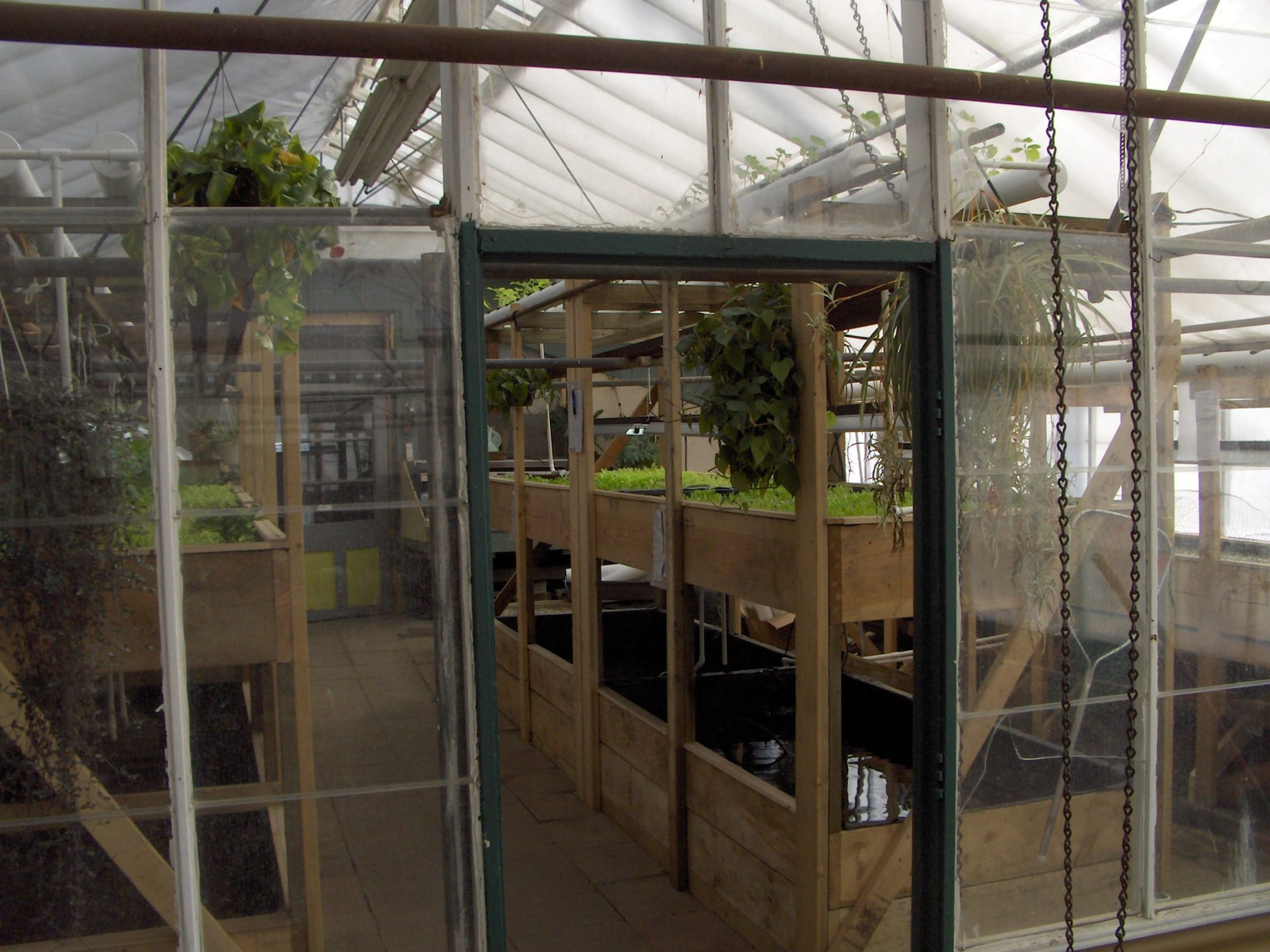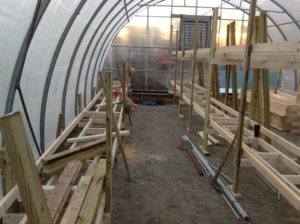The aquaponics systems we design are based on the primary objective of being self-sustainable. The majority of the systems we have designed, built and/or provided consulting were for small hold farms, missions projects, urban farming or reuse greenhouses. The ability to expand or reduce the size and capacity of the system is always part of the design.
As with any business venture or self-sustaining plan, cost is a major factor.
I want to make a point here: if your goal is to build a large scale lettuce factory, and you have the financial resources, and are located where your nutrient additives supplies are readily available, then by all means construct a hydroponics NFT (natural film technology) or raft system. That only makes sense. However, if you desire to build a food production system and have a large variety of vegetables, fruit and fish, then continue reading.
Our involvement with aquaponics was born out of the need for cost effective, high-yield systems for urban food production.
The criteria for our development was:
- Low cost of entry.
- Limited inputs.
- High-yield.
- Limited maintenance.
- Easily accessible materials.
- Expand-ability.
After a few years of experimenting we believe we have developed one of the best designs that meet this criteria. The design is simple. The grow media is the bio-filter housing the bacteria for nitrification, stabilization of the plants and housing for the beneficial worms. There is one moving part per tank for each line of production – a submersible low amp pump run by either utility electric or solar charged batteries. Local gravel for the grow media. The water transfer from the grow beds back to the tank is done with bell siphons and gravity. Aeration for the necessary dissolved oxygen results from the bell siphons, the evacuation of the water from the grow beds drawing air from the porous grow material and to the roots of the plants and into the exiting water. The falling water entering the return plumbing and dropping into the tank also provides aeration. Water is introduced to open air throughout the system. In the event that this does not provide enough oxygen, low amp aerators can be introduced. Small compressors providing air into the tank can also be used and is beneficial during hot summer months by cooling the water. Warm water holds less oxygen.
The fish tanks are usually buried a minimum of 2/3’s below surface taking advantage of the temperature stabilizing properties of the soil or biomass. In some instances we have been able to successfully take advantage of passive heat from adjacent buildings. One inner-city system had the advantage of a large building with a boiler system. We were able to tap into the return line of the system and run the hot water through pipes buried in the ground and coiled around the fish tank. Another principle we adhere to – water is easier and more efficient to heat/cool and maintain than air.
More often than not, the system is plumbed with PVC pipe and/or plastic irrigation tubing. The bells and siphons are also constructed with PVC pipe in most cases. Now, before anyone starts to rant about the hazards of PVC pipe let’s consider that safety issues are mainly considered a concern in PVC pipe that was manufactured before 1977. PEX tubing, PVC pipe, and CPVC pipe marked “NSF-61” or “NSF-PW” indicate that they have passed testing for potentially harmful chemicals leaching into the water. PVC pipe is inexpensive, can be found in most parts of the world and does a wonderful job. You may ask, “What about the solvents used to glue the pipes together!?” That’s simple, we don’t glue our pipes. There’s no reason to glue them due to the fact that the system pushes the water through the pipes at a very low pressure. If you do have a problem with a troublesome joint, simply sink a self-tapping screw through the coupling and pipe from the top – done. One of the many advantages of using this pipe, and not gluing it, is during maintenance, expansion or repairs, the pipe comes apart easily and back together again. Tubing cutters, saws or even a utility knife can be used to cut the stuff with ease. If you have a weird fit problem the pipe can be heated and carefully bent.
The grow media is an extremely important element. We do not use some of the popular grow media on the market, like hydroton (clay pebbles). The main reason is cost. Another reason is availability in many areas. Lava rock is wonderful, but again can be expensive or hard to get. Standing on our principles, we use accessible gravel. Usually ¼ to 3/8” gravel. Pea gravel is usually easy to acquire. Your system can work more efficiently and with less problems if a larger aggregate at ¾ to 1 1/14” is used at the bottom inch or so and around the bell siphon. The more porous the better. The key is local and inexpensive. Our number one go to media is crushed expanded shale. It is half the weight of regular gravel, very porous and inexpensive. This medium has been used for years as a biofilter medium. It has also become popular in certified organic growing mixed into the soil. The beauty of this material is that it starts out at a 7 pH, then, as the system balances it stays forever at 6.8 pH. 6.6 to 6.8 pH is the ultimate aquaponics pH balance for healthy plants and fish.
The ease of expansion and grow bed control is also paramount in our design. The system is designed by production lines for each tank system and a simple PVC ball cock valve on each bed for control. We do not normally build our greenhouse systems with long continuing grow beds. The beds are approximately 10′ long and 30” wide. It is a series of these beds that result in a production line. A single or a double tier bed can be easily added or subtracted from any line. Almost plug-and-play. Any single bed can be shut off for any reason without hindering any other bed. This is advantageous for so many things. For example: Growing large onions in aquaponics can be problematic due to the constant availability of water. Once the water has evacuated from your onion bed(s) you can shut the bed down for a few days and start it right back up without affecting the adjacent beds. This allows the onion to grow larger by learning to store the water when its plentiful.
The results of standing on these simple principles allows the grower to operate a cost effective, high yield system anywhere in the world.


